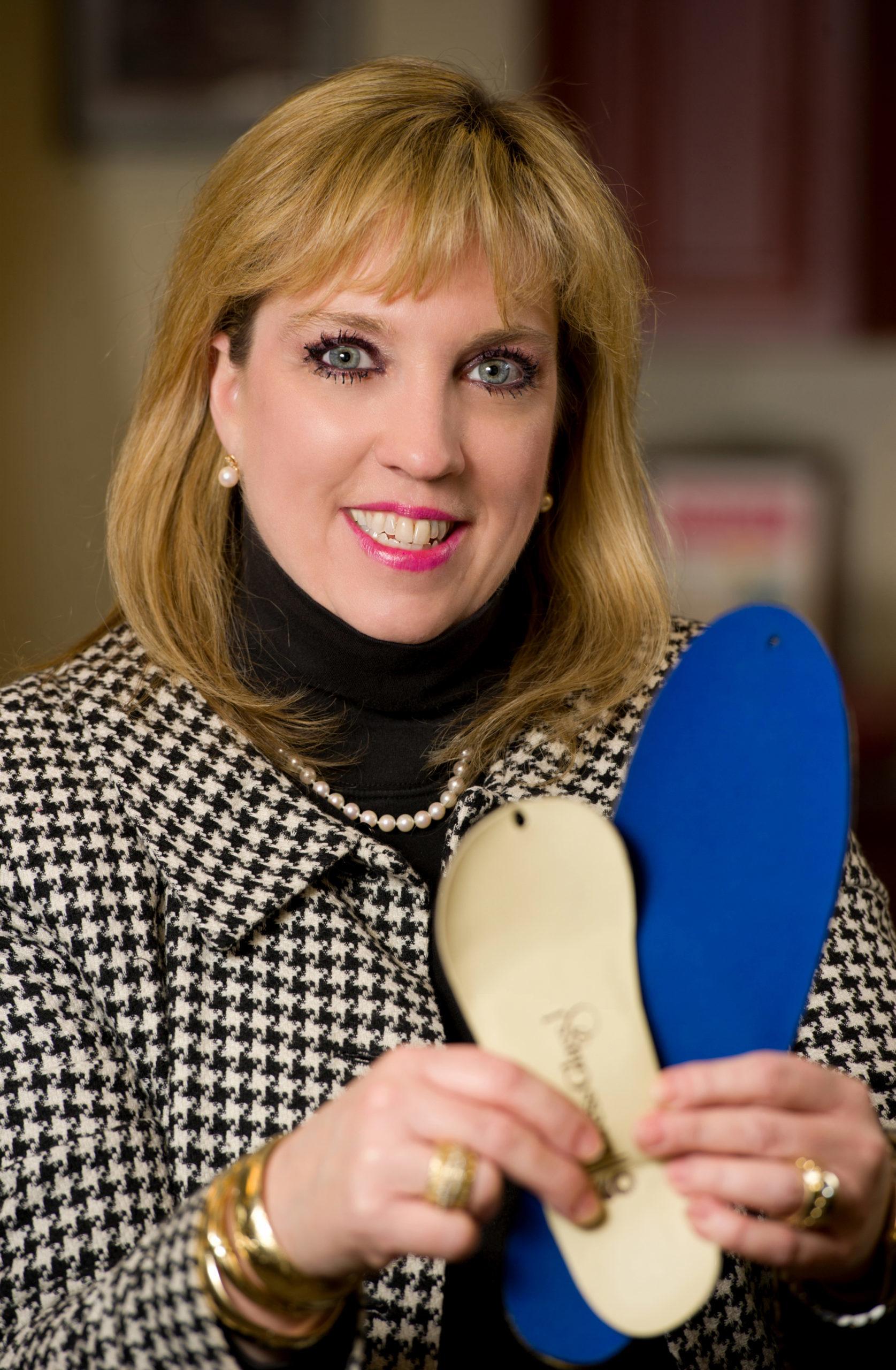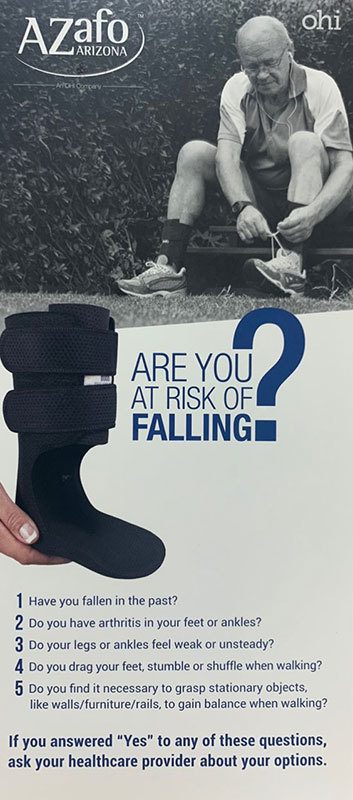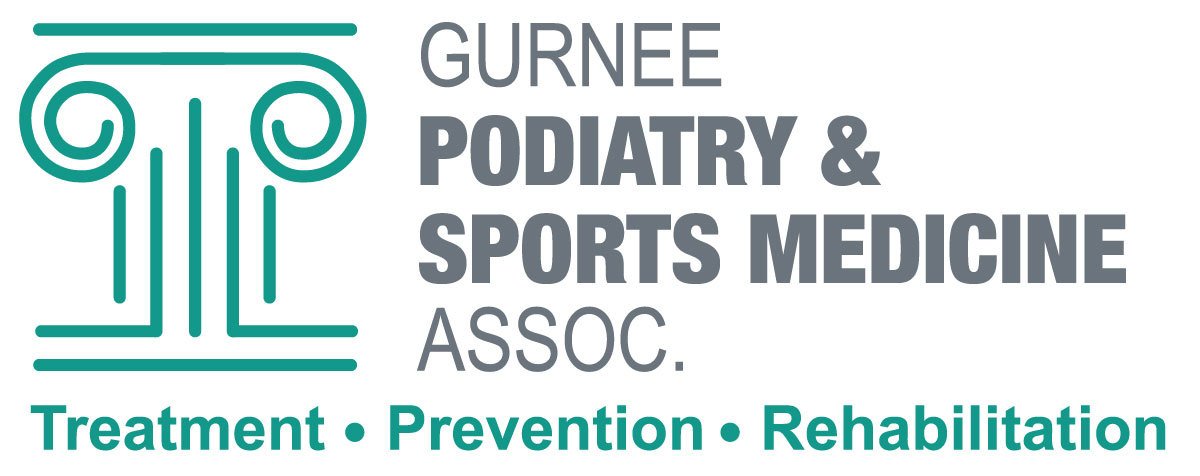Orthotics & Shoes
What are Orthotics?
Custom Orthotics & Braces in Chicago, IL
We evaluate lower extremity alignment and gait to fabricate prescription orthotic devices.
Are you experiencing foot pain or discomfort? Are you seeking a solution to improve your foot health and overall well-being? Look no further than orthotics. Here at the Gurnee Podiatry and Sports Medicine Association, we understand the importance of proper foot support and alignment in maintaining healthy, pain-free feet. Our experienced podiatrists, Dr. Bever, Dr. Schoene, and Dr. Joseph, are ready and willing to help.
Orthotics, also known as shoe inserts or orthoses, are specially designed devices that provide support, stability, and correction for various foot conditions. They're customized to address specific biomechanical issues and help alleviate pain and discomfort associated with foot problems.
Whether you're an athlete looking to enhance performance or simply seeking relief from foot conditions, orthotics can significantly improve your foot health no matter your age or lifestyle.
"Best doctor our family has seen in 12 years. She is AMAZING!!"
- M.S.
What Are Orthotics?
Orthotics are custom-made inserts or devices placed inside your shoes to provide support, stability, and correction for various foot conditions. They're designed to address specific biomechanical issues and improve the alignment of your feet, ankles, and lower limbs.
Types of Orthotics:
- Functional orthotics: These orthotics control abnormal foot motion and provide stability. We often recommend them for individuals with flat feet, overpronation, or excessive foot motion.
- Accommodative orthotics: These orthotics focus on providing cushioning and pressure relief. They're ideal for individuals with foot deformities, arthritis, or diabetic foot ulcers.
Benefits of Orthotics:
- Pain relief: Orthotics help alleviate pain and discomfort caused by various foot conditions such as plantar fasciitis, bunions, and heel spurs. They can also relieve pain that arises from other lower extremity issues like shin pain, ITB issues, runners knee pain, hip or piriformis pain, and lower back issues.
- Improved function: Orthotics enhance foot function and overall body alignment by correcting foot alignment and supporting proper biomechanics.
- Injury prevention: Orthotics can reduce the risk of injuries by providing stability, shock absorption, and support during physical activities.
Whether you're an athlete, a professional on your feet all day, or someone dealing with foot problems, orthotics can significantly improve your comfort and overall foot health. The following section discusses how orthotics help address specific foot conditions.

How Orthotics Help
Custom-made orthotics address foot conditions and promote optimal foot health in the following ways:
Provide Support
Orthotics offer the necessary support to the feet and lower extremities. They distribute weight evenly, alleviating pain and improving foot functionality by addressing overpronation, high arches, or flat feet.
Correct Biomechanical Imbalances
Orthotics correct biomechanical imbalances by realigning the feet, ankles, and legs. This realignment improves joint function and reduces the risk of conditions such as plantar fasciitis, shin splints, and Achilles tendonitis.
Enhance Shock Absorption
Orthotics enhance shock absorption, providing cushioning and reducing the impact forces on the feet and lower limbs. This cushioning helps prevent stress fractures and injuries caused by repetitive impact.
Promote Balance and Stability
Orthotics promote balance and stability by providing a stable foundation for the feet. They benefit individuals with balance issues or those recovering from injuries, minimizing the risk of falls and improving overall mobility.
In the next section, we guide you through the process of obtaining a shoe prescription that works well with the new orthotics that you will receive. With today’s athletic shoes the fit is important; athletic shoes are fitting tighter, and the shoes are more shallow and are actually sizing smaller than in the past. It is very important that you bring the new orthotics with you to the store when purchasing new athletic shoes.
Orthotics and Shoe Fit
When obtaining orthotics, it's important to get a shoe prescription from a qualified podiatrist. By coming to experienced professionals, such as Dr. Bever, Dr. Schoene, or Dr. Joseph, you can ensure that you receive customized orthotics that address your specific foot conditions. The process we follow at Gurnee Podiatry and Sports Medicine Association is as follows:
- Consultation and assessment: The first step is to schedule a consultation with a podiatrist. During this appointment, Dr. Schoene or Dr. Bever will conduct a comprehensive assessment of your feet, including gait analysis, examination of foot structure, and an evaluation of any existing foot conditions or concerns.
- Customized orthotic recommendations: Based on the assessment, we'll determine if orthotics are suitable, and if they are, we'll recommend the appropriate type for your needs. This recommendation will address specific foot conditions, biomechanical imbalances, and lifestyle factors.
- Orthotic fabrication and fitting: If you accept our recommendations, we'll proceed with the fabrication of custom orthotics. This involves precise measurements, using advanced technology and materials to create inserts that match your individual foot shape and requirements. We'll then fit and adjust your orthotics to ensure optimal comfort and effectiveness.
- Follow-Up and Adjustment: You should follow up with your podiatrist for any necessary adjustments after receiving your custom orthotics. This follow-up ensures that the orthotics will provide the desired support to effectively alleviate your foot-related issues.
- Shoe Fit: Our doctors will give you a shoe prescription that will work with the new orthotics. We have numerous shoes at our 2 offices that you can try with the new orthotics. We have many shoe stores that we work with in the surrounding areas to our 2 offices.
Caring for Orthotics
Proper care and maintenance of orthotics are essential to ensure their longevity and effectiveness. Follow these guidelines to keep your orthotics in optimal condition:
- Cleaning: Our orthotics typically have man-made top covers and should not obtain odors, but if they do, a spritz with some deodorizing spray will work. If they get water on them, just let the orthotics dry and they will be good to go! If there is odor from athletic use, stuff newspaper inside the shoe with the orthotics, and that will help with odor. Otherwise, when they fully dry out, the odor will disappear.
- Drying: If they get wet, allow your orthotics to air dry completely before placing them back in your shoes. Avoid exposing them to direct sunlight or heat sources, as excessive heat can warp or deform them.
- Shoe rotation: Consider rotating your orthotics between different pairs of shoes. This rotation helps to distribute the wear and tear more evenly, prolonging the life span of both your orthotics and shoes.
- Storage: Store your orthotics in a cool, dry place when not in use. Avoid folding them or placing heavy objects on top, which can compromise their shape and functionality.
- Regular checkups: Schedule regular check-ups with your podiatrist to ensure that your orthotics still provide the necessary support. Your podiatrist may recommend adjustments or replacements as needed.
- Life span: Orthotics will last for many years, 15-20 if you have them checked and refurbished at the office. They are warranted if the shells crack, so let our office know if you have any issues with orthotics that we have made for you.
- Refurbishing: The typical time period to come in and discuss refurbishing with your doctor is between 3-5 years, as they need to have the posting corrections and materials refreshed on the devices. It is an easy process and at a fraction of the cost of a new pair. It will prolong the life of the devices.
For personalized care instructions, consult Dr. Bever, Dr. Schoene, and Dr. Joseph at Gurnee Podiatry and Sports Medicine Associates.
She always keeps in mind the movements of each sport and incorporates that into the treatment plan.
"Dr. Schoene was amazing. She really took the time to listen to my problems in my foot and explained a course of treatment."
- C.J.


What are the Common Uses of Orthotics?
How Do Orthotics Compare with Arch Supports?
Many people compare orthotics to commercial, mass produced arch supports. To put it simply, there is only a slight similarity!
Only a custom orthotic can effectively support and control the abnormal foot, taking into account age, weight, specific sport, arch height, lower leg and foot flexibility and their biomechanical abilities.
The typical life of an orthotic can be at least 10-15 years, with periodic refurbishing of the top cover’s.
Bracing for Sports and Gait abnormalities
Our office stocks many supplies, braces tapes and orthotics to support gait conditions such as:
Avoiding Falls
Our office casts and fabricates braces called the Moore Balance Brace for our patients who have a history of falls, have instability or difficulty walking. These braces are easy to wear, can be worn while ambulating and exercising, and traditionally covered by insurance.
"Dr. Schoene took the time to explain everything to me so that I could understand what was going on. I didn't feel rushed in/out as at some practices. Her care for me as a person and patient were apparent. Her expertise was comforting. Thank you!"
- A.K.

